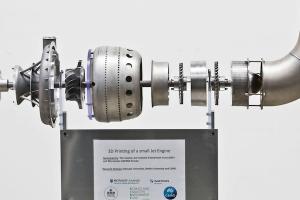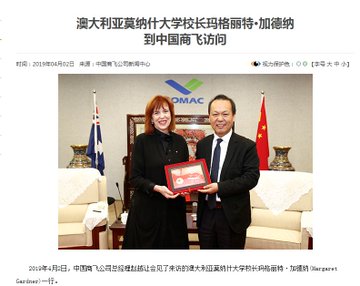by Ganesh Sahathevan
China analyst Geoff Wade tweeted this morning:
See new Tweets
Conversation
Australia: Monash University developing aircraft with PRC SOE COMAC, named by US Department of Defence as CCP military company
https://twitter.com/search?q=monash%20comac%20%40geoff_p_wade&src=typed_query…
&
https://defense.gov/Newsroom/Releases/Release/Article/2472464/dod-releases-list-of-additional-companies-in-accordance-with-section-1237-of-fy/source/GovDelivery/…
Wade's tweet throws fresh light on the story below posted on this blog last year:
Thursday, June 11, 2020
Monash Uni partnering China's COMAC in aircraft 3D printing venture will expose SAFRAN of France to theft of proprietary French jet engine 3D printing technology:Monash has had a prior agreement with SAFRAN to develop 3D printing technology for aircraft engines since 2015
by Ganesh Sahathevan

In 2015 Engineering Australia and others reported:
The world’s first 3D-printed jet engine was revealed to the world at the 2015 Melbourne International Airshow. The team, which included Safran, Monash University and Amaero, in collaboration with Deakin University and the CSIRO, took a Safran gas turbine power unit from a Falcon executive jet, scanned it and created two copies using their customised 3D metal printers.
“We proved that our team were world-leaders,” said Professor Xinhua Wu, Director of the Monash Centre for Additive Manufacturing. “I’m delighted to see our technology leap from the laboratory to a factory at the heart of Europe’s aerospace industry in Toulouse.”
Amaero will establish a new manufacturing facility on the Safran Power Units site in Toulouse using a 3D printing technology known as Selective Laser Melting. They will not only bring the know-how and intellectual property they’ve developed in partnership with Monash University, they will also relocate two of the large printers they have customised for this manufacturing task.
Safran Power Units will test and validate the components the team makes, and then the factory will enter serial production, producing components that Safran Power Units will post process, machine and assemble into auxiliary power units and turbojet engines for commercial and defence use. The project team expect that production will commence in the first quarter of 2017.
“Our new facility will be embedded within the Safran Power Units factory in Toulouse and will make components for Safran’s auxiliary power units and turbojet engines,” said Amaero CEO Barrie Finnin.
Monash has since formed a partnership with China's COMAC, signed in 2017, which committed both parties to work on the design of specialised new 3D printed alloys for the design and construction of the C919.
The security implications for SAFRAN are obvious, even if Monash VC Margaret Gardner refuses to see any danger of espionage.
TO BE READ WITH
Australian uni continuing work on Chinese plane linked to espionage claims



No comments:
Post a Comment